Porous Solids
by Tuğrul Yazar | April 16, 2013 12:51
This is a solid-void (or boolean) exercise for first-year students. It is initially introduced by Onur Yüce Gün as an in-class exercise but later became a design problem also. Before getting into the parametric wall and eventually muqarnas exercises, this small but effective assignment helps students understand some of the fundamental concepts such as associativity, solid/void relationships, and component-based design compositions in three dimensions. Here is the initial object we used to introduce in the design computing class:

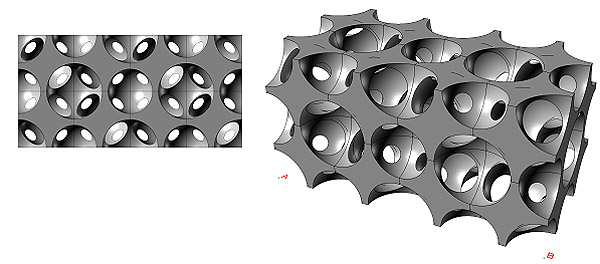
As you see, the component is developed in a fashion that fits well within a composition driven by a simple “mirror” rule. Our in-class assignment was to develop an alternative to the above method. Özgüç introduced interesting variations of these compositions so-called Porous Solids:
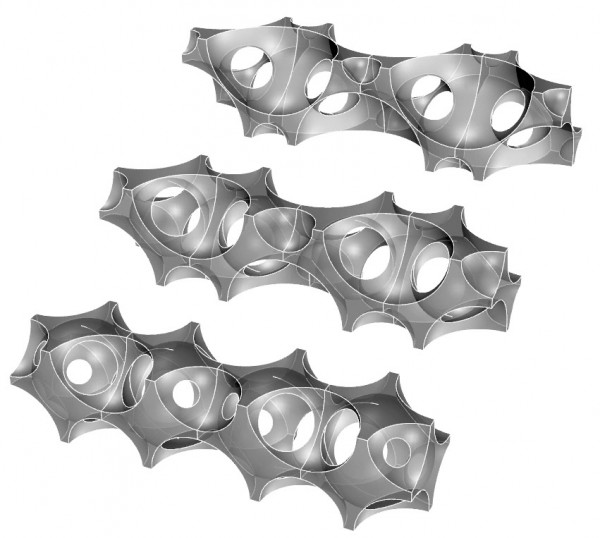
Below are some very interesting crystal formations studied by Fiona Meldrum on her website called “Bio-inspired materials chemistry” (here[1]):
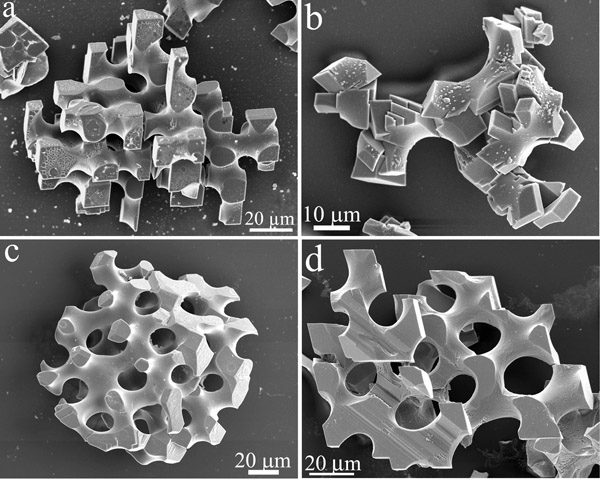
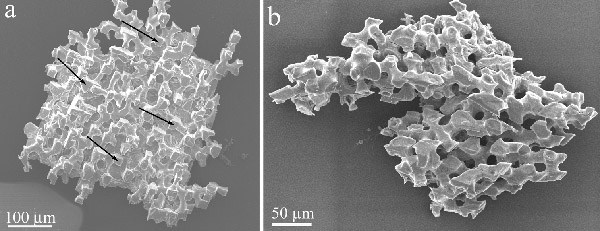
And below is another example, a porous metal foam;
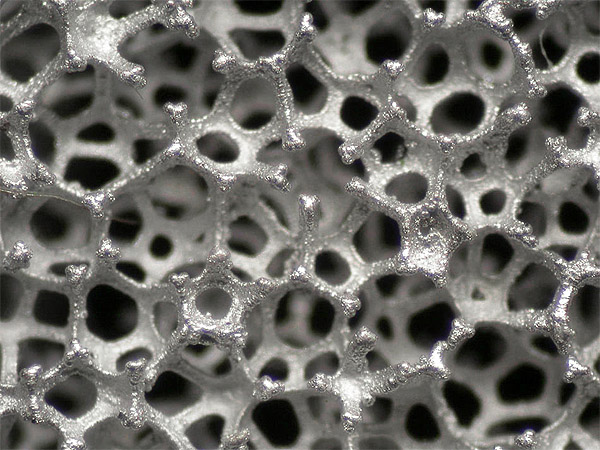
…Celmet is a porous metal made from nickel or nickel chrome alloy. The porous metal manufacturing process comprises electro conductive coating to plastic foam, followed by nickel plating and plastic foam removal by heat treatment. Celmet’s features include high porosity (up to 98%), considerably higher than other porous metals, such as nonwoven metal fabric and foam metal; it also features a three-dimensional mesh-like structure that forms interconnected, open and spherical pores. Moreover, it is easy to process the porous metal into various shapes by cutting and stamping…
Inspiringly beautiful.
- here: http://www.inchm.bris.ac.uk/people/meldrum/Porous%20Xls.html
Source URL: https://www.designcoding.net/porous-solids/